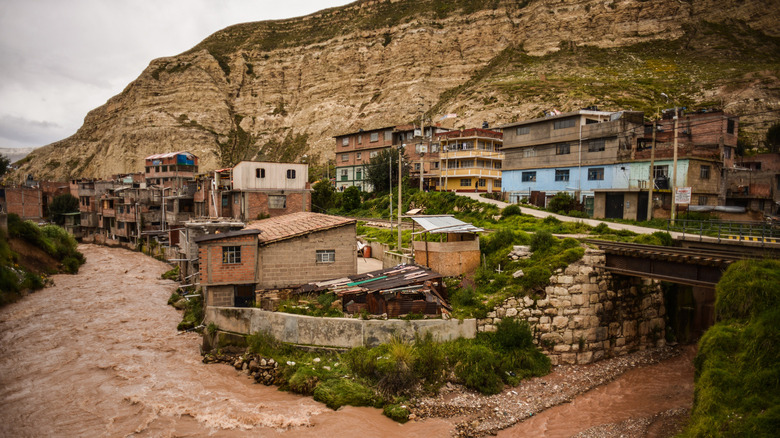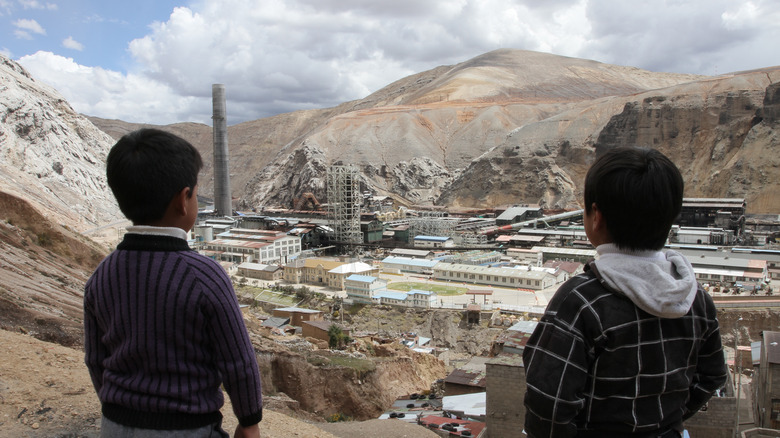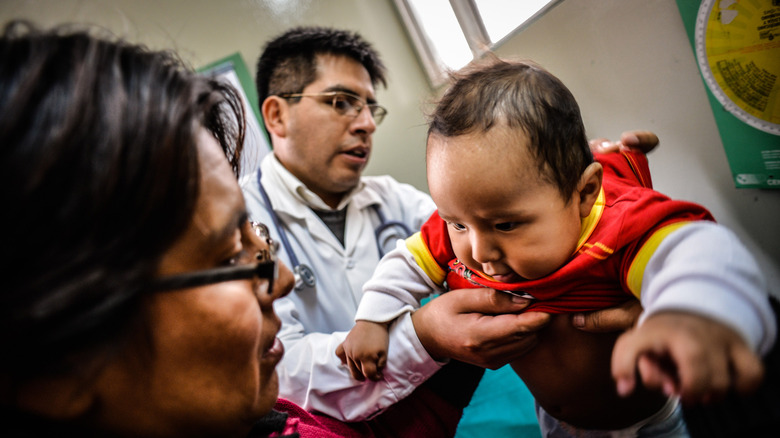This Town In Peru Is One Of The Most Dangerous Places In The World
La Oroya, Peru, is located high in the Andes Mountains, sitting at an altitude of 12,195 feet (3,717 meters). It's a small city located in a part of Peru known for mining, as well as the smelting and refining of copper, zinc, silver, and lead ores (via Britannica).
In another unfortunate instance of human actions impacting nature, according to Time, a smelter was built in La Oroya in 1922, and it has caused problems with pollution for a century. In 1997, the smelter was taken over by a company called Doe Run Peru, which is a subsidiary of the U.S.-owned Renco Group (via Oxfam). At the time of the purchase, it was agreed that the company would improve the facility and effectively make it less harmful to the surrounding environment.
This has prompted Pure Earth — a nonprofit formerly known as Blacksmith Institute — to name La Oroya one of the most polluted places on Earth. The toxic elements that are a byproduct of the smelting process have polluted the city's air, water, and soil.
The pollution is affecting the health of the city's residents
While the pollution found in La Oroya affects anyone, children have seen the greatest impact. According to Time, 99% of children who live in the area have blood levels exceeding acceptable amounts of lead, with the average being three times the World Health Organization's limit. Such high levels of lead and other pollutants found in La Oroya — which also includes copper, zinc, and sulfur dioxide — can inhibit growth and cause permanent damage, especially to a child's mental development (via Pure Earth). At local hospitals, neuroscientists have even reported infants being born with high levels of lead in their blood, which they acquired while still in the womb.
Soil tests in La Oroya have also revealed lead, arsenic, and cadmium contamination. Per Everything Connects, it's possible for health effects to arise from contact with contaminated soil, but the more likely scenario is through other resources like water or food that has been in contact with contaminated soil. Many of the pollutants commonly found in contaminated soil are carcinogenic, meaning people who have been exposed to them are at high risk for developing cancer.
Measures being taken to combat the issue
According to Oxfam, the Peruvian government cited Doe Run Peru for environmental violations, which caused the company to close the smelter due to the high costs of complying with the requirements to clean up the problem. In 2011, Doe Run Peru's parent company, Renco Group, filed a lawsuit against the Peruvian government, which cited an alleged breach of the U.S.-Peru Free Trade Agreement.
However, the damage to the environment and to the health of the people who call La Oroya home was already done and continues to cause problems. Per Pure Earth, a public health program has been put in place. It operates at the neighborhood level, and one of the measures is the bi-annual blood testing for all children.
Peru's national environmental council also approved the use of an alert system that is intended to limit exposure to harmful contaminants by issuing residents red alerts that tell them to stay inside in the event of especially toxic air quality or weather conditions that can contribute to worsening pollution.


